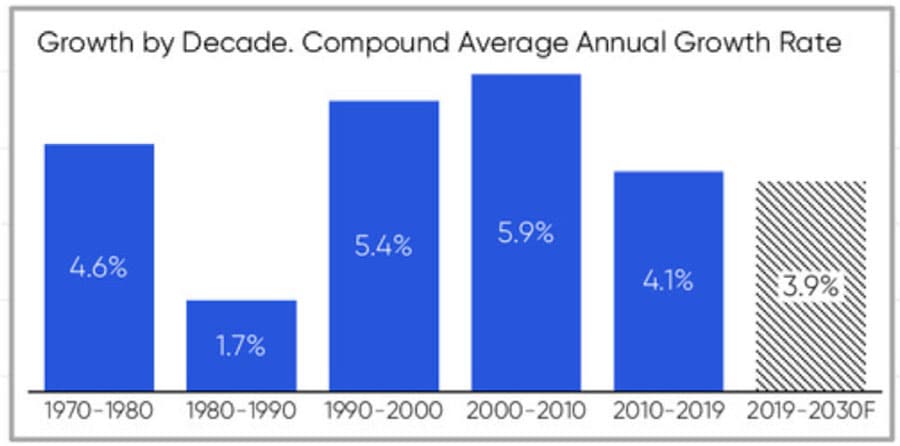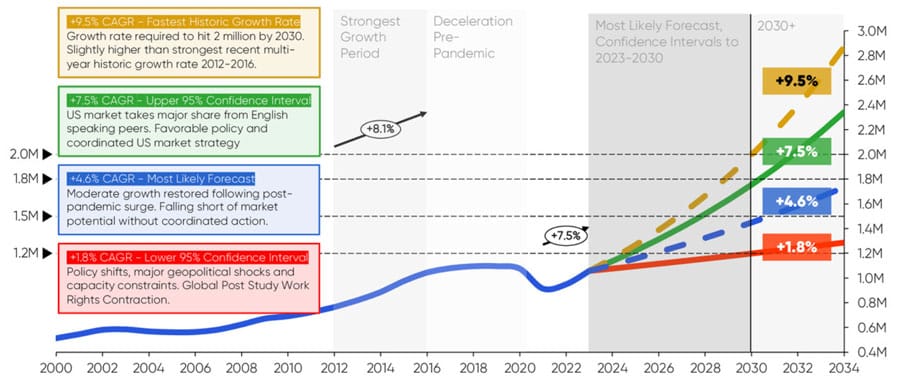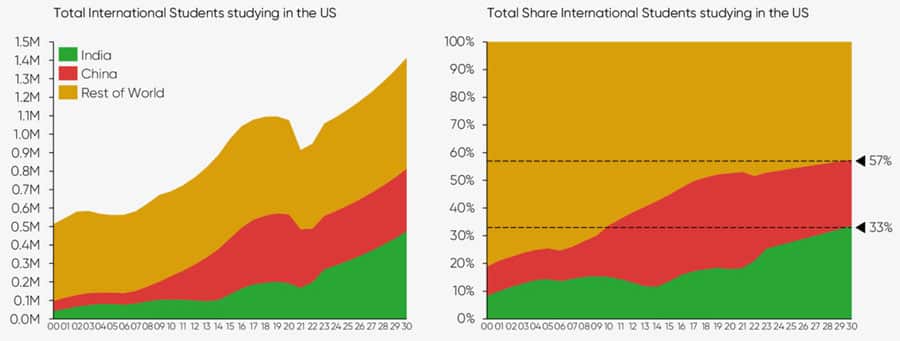Will the US host 2 million international students within the decade?
- New forecast modelling from research specialists HolonIQ projects a range of growth scenarios for foreign enrolment in the US
- The most likely scenario anticipates a 4.6% compound annual growth rate through 2034, resulting in a foreign enrolment base of nearly 1.8 million students by that year
- India will be the big driver of growth during that period with important contributions from a number of additional growth markets, including Vietnam, Nigeria, Bangladesh, Nepal, Brazil, and Mexico
A new analysis from international research firm HolonIQ sets out four future growth scenarios for foreign enrolment in the United States over the next decade. Ranging from what amounts to "essentially flat" to "more than double," the growth trajectories are based on detailed modelling of global student flows, with adjustments for national policies regarding international students, capacity, competition, and the shifting geopolitical context.
The context for those US-specific projections is HolonIQ's forecast that the number of students enrolled in higher education abroad will reach as high as 9 million by 2030, up from more than 6 million today. That seems like a big jump, and it is, but it also relies on a relatively low compound annual growth rate for this decade, compared to what has been recorded for the previous five decades.

Against that backdrop, the analysis projects that foreign enrolment in the US will rise from just over 1 million students today to somewhere between 1.3 million (the most conservative scenario) and 2.8 million (the most aggressive projection) by 2034. The distance between those two ends of the forecast range relies on the presence (or absence) of major "geopolitical shocks," significant policy shifts, and, more specifically to the US, more welcoming policies for foreign students as well as the establishment of a coordinated national strategy for international education.

Introducing the new projections this week, HolonIQ CEO Patrick Brothers said, "To put those numbers into context, you see there that historically the fastest-growing period for the US was 8.1% [compound annual growth rate] for the period 2012 to 2016. We've seen a really significant ramp in the last two years as the US has picked up from that low point post-pandemic…so there are some enormous moves happening in the prior-to years. If anything, we'll see another large bump as we had into 2024, but just under 5% [compound annual growth rate through 2034] is our most likely growth position."
Where will the students come from?
The forecast model sees India as a major driver of continuing growth for foreign enrolment in the US. As we reported late last year, "India was the main driver of growth [for the US in 2022/23], sending 35% more students (268,923) than in the previous year. China remains the top market (289,526), but by the slimmest of margins, and was flat in terms of growth (-0.2%)."
Those contrasting trends for India and China reflect in the HolonIQ analysis as well, which anticipates that India will account for roughly a third of all international enrolments in the US by 2030, with Chinese students making up nearly another quarter.

Alongside those major sending countries, several other emerging markets – for which we are already seeing significant year-over-year growth in the US – are expected to contribute substantially to the overall growth of America's foreign enrolment through 2030. They include Vietnam (projected to be the #4 sending market by 2030), Nigeria (the projected #5), Bangladesh (the projected #6), Nepal (the projected #8), Brazil (#10), and Mexico (#11).
For additional background, please see:
- ICEF Monitor Global Summit: A unique forum for thought leadership and discussion on both present-day trends and the future of international student mobility
- "A big picture view of student mobility through 2050"
- "New forecast warns that US is falling behind in the global race for talent"
- "Forecast projects major growth in international enrolments through 2030"
















